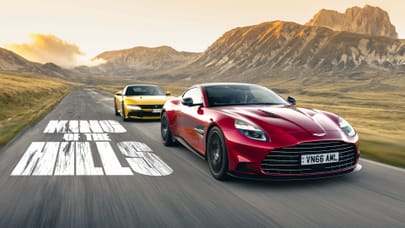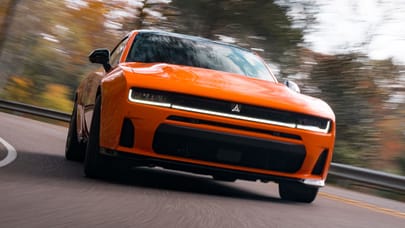
History lesson: coachbuilding
We're currently tumbling through half a decade's worth of recession, and today, five long years after the world's backside fell off, the green shoots of recovery haven't really poked themselves above the parapet. Which sounds like it'd be fairly terrible for an industry like car manufacturing; one that sells people shiny new things they probably don't need. Or at least can find elsewhere for less.
And you'd be right. After Robert Peston officially declared the End of Civilisation in 2008, Toyota announced its first operating loss since 1938 (the company was founded in '37). Honda dropped out of F1. Nissan cut production by 80,000 vehicles in the first few months of 2009. Jaguar Land Rover sought a $1.5 blllion government bailout to soak up the sales slump. Things, in short, were rubbish.
But the idea that every wild ambition's doomed to frustration hasn't stopped the manufacturer's in the past. And they're no different today: they've adapted. For the grey bulk of volume-selling cars, green's the new red. Frugality trumps fun. Slippery is sexy. Things, in short, are rubbish.
However, while most of us are teetering on the precipice of poverty and destitution, there's a miniscule percentage of people that share the fistful of coins left in the economy, and they still exchange them for expensive cars. But restrictions on loans and finance mean they're the ONLY people exchanging them for expensive cars, making the relationship between rich human and pricey vehicle a far more intimate one.
Just look at the personalisation services sprouting from the rubble. Aston Martin calls it "Q", Jaguar Engineering to Order, Ferrari Special Projects and Rolls-Royce Bespoke.
We call it survival. And a clever, profitable means to it. When it first came out, Jeremy Clarkson discovered that the Jaguar XKR-S was only available in black with a piano interior. Providing you've got the money and inclination, today you can order it in prosthetic-limb beige with a teak-lined boot, vulgalour interior and Barbie-pink 20-inch rims.
But the idea of totalitarian, factory-supported car tailoring isn't a new one. It started in the twenties when there was a booming carrozziere (Italian for coachbuilder, dropouts) culture. And it was a damn site more extensive than the services offered today.
Should you have been a member of the car-buying elite just after the dawn of motoring broke, you had the option of getting yourself an off-the-peg vehicle, or you could buy a rolling chassis from a manufacturer then choose a coachbuilder to build you a body.
Sometimes a company would have a menu of pre-drawn outlines, others you could work with the designer and create your own style with one solitary restriction: the rolling chassis' original DNA should always be trumpeted in the design - so no streamline Bentleys or eight-seat Bugattis. Otherwise, the automotive aesthetic was under democratic assault.
The only gatekeepers were the carrozziere, but they were a liberal lot and enjoyed their position as leaders of the industrial design boom, and were happy to realise the wilder ambitions of their customers. It helped that it was a profitable business, too...
Looking for more from the USA?
Top Gear
Newsletter
Thank you for subscribing to our newsletter. Look out for your regular round-up of news, reviews and offers in your inbox.
Get all the latest news, reviews and exclusives, direct to your inbox.
Lots of the firms that started life as boutique proto custom shops were often mopped up by car manufacturers to bulk-build bodies for carmakers. Fisher Body, for example, is responsible for thousands of the more cerebral GM efforts, and Park Ward and Mulliner coachworks formed close partnerships with Rolls-Royce and Bentley.
The industry peaked in the late thirties, then continued to decline until WWII. After the war, bespokery and coachbuilding gave way to mass production and in-house design departments, and several of the old guard went bankrupt. But there were a few, savvy companies that re-nosed their business - Zagato, Bertone, Karmann and Pininfarina all morphed into styling houses, occasionally building special bodies for carmakers as subcontractors.
But things got even more difficult in the sixties. Instead of separate body/chassis design, most manufacturers moved to monocoque construction, predefining the shapes given to body shells. The Health and Safety set made things trickier still, limiting coachbuilders to modification of the outer panels alone - structure and proportions were pretty much untouchable, which sounded the industry's death knell. Until today.
The rise of these "coachbuilding lite" services carry masses of hope for the future of design, too. Unfettering possibility to the poshos has already thrown up some interesting options - Rolls-Royce's bespoke department, for example, informed the factory options list with the long-wheelbase Phantom; originally it was a 14-car commission from Peninsula Hotels. The infamous starlight headlining was also born of a one-off order.
So, it seems luxury car design is at its wildest, right here, right now, several miles deep into a global financial crisis. Here's to another five years.
More from Top Gear
Trending this week
- Car Review
BMW 1 Series
- Top Gear's Top 9
Nine dreadful bits of 'homeware' made by carmakers








